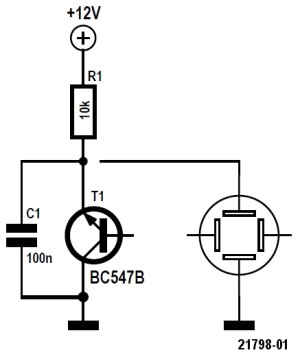Small Circuits Revival (17): Battery Refresher
on
Battery Refresher
idea: Burkhard Kainka (Germany)
In the past, a sawtooth was often generated using no more than a small neon lamp and a capacitor, and the resuting circuit was called 'relaxation oscillator'. Less well known, the effect can also be achieved with an ordinary NPN small signal transistor like a BC547 as sketched in Figure 1 below. It is too much to explain here in detail how this can work – let it be sufficient to state that it works and we refer you to the original publication in Elektor's Project Generator Compendium 2011 (page 80) for the details.

Lead-acid gel batteries have the undesirable characteristic that they go 'high impedance' i.e. lose their capacity if they haven’t been used for a (very) long time. And while it is possible to revive such a ‘dead’ battery, this is a tedious and lengthy process. It is, of course, much better to avoid this state in the first place.
A tried-and-tested method to prevent the above is to load the battery continuously with very short but reasonably large current pulses. This is achieved with the circuit of Figure 2; the alert reader will recognise the transistor relaxation oscillator from Figure 1.

The oscillator around T1 drives the base of power transistor T2, which will discharge the battery with 1-amp pulses having a duration of about 2 ms when using the component values shown here. This corresponds to an average current of about 1 mA, which is of the same order of magnitude as the typical self-discharge current of a lead-acid gel battery.
The combination of T3, D1 and R2 gives a rough visual indication of the state of charge of the battery; the less frequently the LED lights up, the lower the battery voltage.


Discussion (11 comments)